-
MARKET INTRODUCTION
-
INTRODUCTION
- RESEARCH OBJECTIVE
- ASSUMPTIONS
- LIMITATIONS
-
SCOPE OF STUDY
-
MARKET STRUCTURE:
- GLOBAL INTERACTIVE
- GLOBAL INTERACTIVE
- GLOBAL INTERACTIVE
- GLOBAL INTERACTIVE
- GLOBAL
- GLOBAL
- GLOBAL
-
VIDEO WALL MARKET : BY TYPE
-
VIDEO WALL MARKET : BY DISPLAY UNITS
-
VIDEO WALL MARKET : BY FRAME SIZE
-
VIDEO WALL MARKET : BY DEPLOYMENT TYPE
-
INTERACTIVE VIDEO WALL MARKET : BY ORGANIZATION SIZE
-
INTERACTIVE VIDEO WALL MARKET : BY END USER
-
INTERACTIVE VIDEO WALL MARKET : BY REGION
-
RESEARCH
-
METHODOLOGY
-
RESEARCH TYPE
-
PRIMARY RESEARCH
-
SECONDARY RESEARCH
-
FORECAST MODEL
-
MARKET DYNAMICS
-
INTRODUCTION
-
MARKET DRIVERS
-
MARKET CHALLENGES
-
MARKET OPPORTUNITIES
-
EXECUTIVE SUMMARY
-
MARKET
-
FACTOR ANALYSIS
-
PORTER’S FIVE FORCES ANALYSIS
-
SUPPLY CHAIN ANALYSIS
-
INTERACTIVE
-
VIDEO WALL MARKET
-
INTRODUCTION
- BY TYPE
- BY DISPLAY UNITS
- BY FRAME SIZE
- BY DEPLOYMENT
- BY REGION
-
MARKET STATISTICS
-
CUSTOM LAYOUT
-
3D INSTALLATION
-
LED
-
OTHERS
-
2X2
-
OTHERS
-
TYPE
-
MULTI TOUCH
-
TOUCH LESS
-
BY ORGANIZATION SIZE
-
(SMES)
-
BY END-USER
-
AND DEFENCE
-
IT AND TELECOMMUNICATION
-
MEDIA AND ENTERTAINMENT
-
NORTH AMERICA
-
ROW
-
COMPANY PROFILES
-
SAMSUNG
-
ELECTRONICS CO. LTD. (SOUTH KOREA)
-
SONY CORPORATION (JAPAN)
-
NAVORI SA (SWITZERLAND)
-
NEC
-
DISPLAY SOLUTIONS (U.S)
-
OMNIVEX CORPORATION (CANADA)
-
PANASONIC CORPORATION (JAPAN)
-
ADFLOW
-
NETWORKS (CANADA)
-
AU OPTRONICS CORP (TAIWAN)
-
PHILIPS N.V. (THE NETHERLANDS)
-
LG
-
DISPLAY CO. LTD. (SOUTH KOREA)
-
OTHERS
-
LIST
-
OF TABLES
-
INTERACTIVE VIDEO
-
WALL MARKET, BY TYPE
-
INTERACTIVE
-
VIDEO WALL MARKET, BY DISPLAY UNITS
-
TABLE 3
-
INTERACTIVE VIDEO WALL MARKET, BY FRAME SIZE
-
TABLE 4
-
INTERACTIVE VIDEO WALL MARKET, BY DEPLOYMENT TYPE
-
TABLE 5
-
INTERACTIVE VIDEO WALL MARKET, BY ORGANIZATION SIZE
-
INTERACTIVE VIDEO WALL MARKET, BY
-
END-USER
-
INTERACTIVE VIDEO WALL
-
MARKET, BY REGIONS
-
NORTH
-
AMERICA INTERACTIVE VIDEO WALL MARKET, BY TYPE
-
TABLE 9
-
NORTH AMERICA INTERACTIVE VIDEO WALL MARKET, BY DISPLAY UNITS
-
TABLE
-
NORTH AMERICA INTERACTIVE VIDEO WALL MARKET, BY FRAME SIZE
-
NORTH AMERICA INTERACTIVE VIDEO WALL MARKET, BY DEPLOYMENT
-
TYPE
-
NORTH AMERICA INTERACTIVE VIDEO WALL MARKET,
-
BY ORGANIZATION SIZE
-
NORTH AMERICA INTERACTIVE
-
VIDEO WALL MARKET, BY END USER
-
NORTH AMERICA INTERACTIVE
-
VIDEO WALL MARKET, BY REGION
-
EUROPE INTERACTIVE
-
VIDEO WALL MARKET, BY TYPE
-
EUROPE INTERACTIVE
-
VIDEO WALL MARKET, BY DISPLAY UNITS
-
EUROPE
-
INTERACTIVE VIDEO WALL MARKET, BY FRAME SIZE
-
EUROPE
-
INTERACTIVE VIDEO WALL MARKET, BY DEPLOYMENT TYPE
-
EUROPE
-
INTERACTIVE VIDEO WALL MARKET, BY ORGANIZATION SIZE
-
TABLE 20
-
EUROPE INTERACTIVE VIDEO WALL MARKET, BY END-USER
-
TABLE 21
-
EUROPE INTERACTIVE VIDEO WALL MARKET, BY REGION
-
TABLE 22
-
REST OF EUROPE INTERACTIVE VIDEO WALL MARKET, BY TYPE
-
TABLE 23
-
REST OF EUROPE INTERACTIVE VIDEO WALL MARKET, BY DISPLAY UNITS
-
TABLE
-
REST OF EUROPE INTERACTIVE VIDEO WALL MARKET, BY FRAME SIZE
-
REST OF EUROPE INTERACTIVE VIDEO WALL MARKET, BY DEPLOYMENT
-
TYPE
-
REST OF EUROPE INTERACTIVE VIDEO WALL MARKET,
-
BY ORGANIZATION SIZE
-
REST OF EUROPE INTERACTIVE
-
VIDEO WALL MARKET, BY END-USER
-
REST OF EUROPE INTERACTIVE
-
VIDEO WALL MARKET, BY REGION
-
ASIA-PACIFIC INTERACTIVE
-
VIDEO WALL MARKET, BY TYPE
-
ASIA-PACIFIC INTERACTIVE
-
VIDEO WALL MARKET, BY DISPLAY UNITS
-
ASIA-PACIFIC
-
INTERACTIVE VIDEO WALL MARKET, BY FRAME SIZE
-
ASIA-PACIFIC
-
INTERACTIVE VIDEO WALL MARKET, BY DEPLOYMENT TYPE
-
ASIA-PACIFIC
-
INTERACTIVE VIDEO WALL MARKET, BY ORGANIZATION SIZE
-
TABLE 34
-
ASIA-PACIFIC INTERACTIVE VIDEO WALL MARKET, BY END-USER
-
TABLE 35
-
ASIA-PACIFIC INTERACTIVE VIDEO WALL MARKET, BY REGION
-
TABLE 36
-
REST OF WORLD INTERACTIVE VIDEO WALL MARKET, BY TYPE
-
TABLE 37
-
REST OF WORLD INTERACTIVE VIDEO WALL MARKET, BY DISPLAY UNITS
-
TABLE
-
REST OF WORLD INTERACTIVE VIDEO WALL MARKET, BY FRAME SIZE
-
REST OF WORLD INTERACTIVE VIDEO WALL MARKET, BY DEPLOYMENT
-
TYPE
-
REST OF WORLD INTERACTIVE VIDEO WALL MARKET,
-
BY ORGANIZATION SIZE
-
REST OF WORLD INTERACTIVE
-
VIDEO WALL MARKET, BY END-USER
-
REST OF WORLD INTERACTIVE
-
VIDEO WALL MARKET, BY REGION
-
LIST OF FIGURES
-
FIGURE 1
-
RESEARCH METHODOLOGY
-
INTERACTIVE VIDEO WALL
-
MARKET: BY TYPE (%)
-
INTERACTIVE VIDEO WALL MARKET:
-
BY DISPLAY UNITS (%)
-
INTERACTIVE VIDEO WALL MARKET:
-
BY FRAME SIZE (%)
-
INTERACTIVE VIDEO WALL MARKET:
-
BY DEPLOYMENT TYPE (%)
-
INTERACTIVE VIDEO WALL MARKET:
-
BY ORGANIZATION SIZE (%)
-
INTERACTIVE VIDEO WALL
-
MARKET: BY END-USER (%)
-
INTERACTIVE VIDEO WALL MARKET:
-
BY REGION (%)
-
NORTH AMERICA INTERACTIVE VIDEO WALL
-
MARKET, BY TYPE (%)
-
NORTH AMERICA INTERACTIVE VIDEO
-
WALL MARKET, BY DISPLAY UNITS (%)
-
NORTH AMERICA
-
INTERACTIVE VIDEO WALL MARKET, BY FRAME SIZE (%)
-
NORTH
-
AMERICA INTERACTIVE VIDEO WALL MARKET, BY DEPLOYMENT TYPE (%)
-
FIGURE 13
-
NORTH AMERICA INTERACTIVE VIDEO WALL MARKET, BY ORGANIZATION SIZE (%)
-
FIGURE
-
NORTH AMERICA INTERACTIVE VIDEO WALL MARKET, BY END-USER (%)
-
NORTH AMERICA INTERACTIVE VIDEO WALL MARKET, BY REGION
-
(%)
-
EUROPE INTERACTIVE VIDEO WALL MARKET, BY TYPE
-
(%)
-
EUROPE INTERACTIVE VIDEO WALL MARKET, BY DISPLAY
-
UNITS (%)
-
EUROPE INTERACTIVE VIDEO WALL MARKET,
-
BY FRAME SIZE (%)
-
EUROPE INTERACTIVE VIDEO WALL
-
MARKET, BY DEPLOYMENT TYPE (%)
-
EUROPE INTERACTIVE
-
VIDEO WALL MARKET, BY ORGANIZATION SIZE (%)
-
EUROPE
-
INTERACTIVE VIDEO WALL MARKET, BY END-USER (%)
-
EUROPE
-
INTERACTIVE VIDEO WALL MARKET, BY REGION (%)
-
ASIA-PACIFIC
-
INTERACTIVE VIDEO WALL MARKET, BY TYPE (%)
-
ASIA-PACIFIC
-
INTERACTIVE VIDEO WALL MARKET, BY DISPLAY UNITS (%)
-
ASIA-PACIFIC
-
INTERACTIVE VIDEO WALL MARKET, BY FRAME SIZE (%)
-
ASIA-PACIFIC
-
INTERACTIVE VIDEO WALL MARKET, BY ORGANIZATION SIZE (%)
-
FIGURE 27
-
ASIA-PACIFIC INTERACTIVE VIDEO WALL MARKET, BY END-USER (%)
-
FIGURE 28
-
ASIA-PACIFIC INTERACTIVE VIDEO WALL MARKET, BY REGION (%)
-
FIGURE 29
-
ROW INTERACTIVE VIDEO WALL MARKET, BY TYPE (%)
-
FIGURE 30
-
ROW INTERACTIVE VIDEO WALL MARKET, BY DISPLAY UNITS (%)
-
FIGURE 31
-
ROW INTERACTIVE VIDEO WALL MARKET, BY FRAME SIZE (%)
-
FIGURE 32
-
ROW INTERACTIVE VIDEO WALL MARKET, BY DEPLOYMENT TYPE (%)
-
FIGURE 33
-
ROW INTERACTIVE VIDEO WALL MARKET, BY ORGANIZATION SIZE (%)
-
FIGURE 34
-
ROW INTERACTIVE VIDEO WALL MARKET, BY END-USER (%)
-
FIGURE 35
-
ROW INTERACTIVE VIDEO WALL MARKET, BY REGION (%)
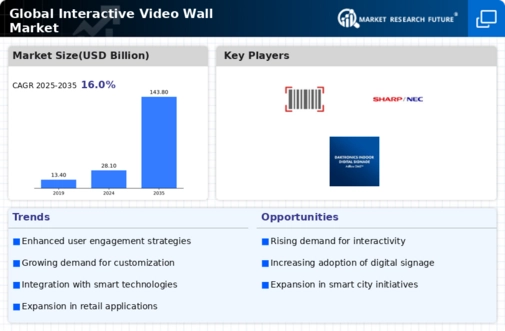

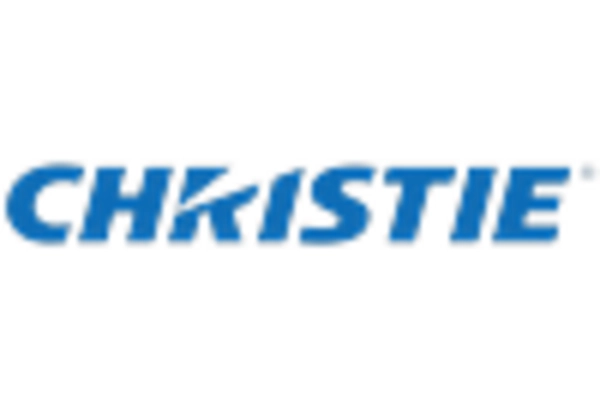
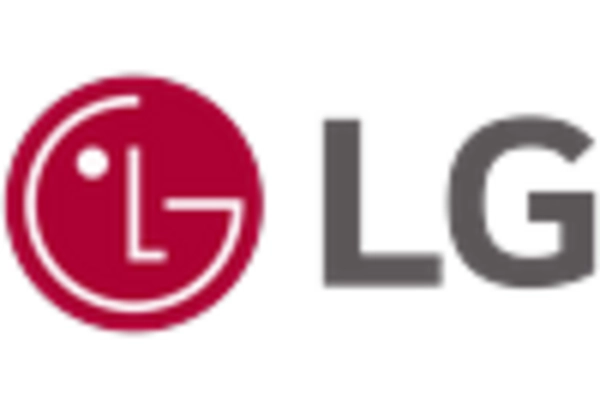
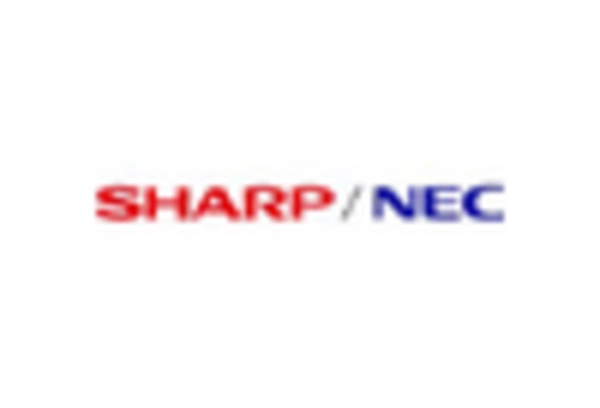

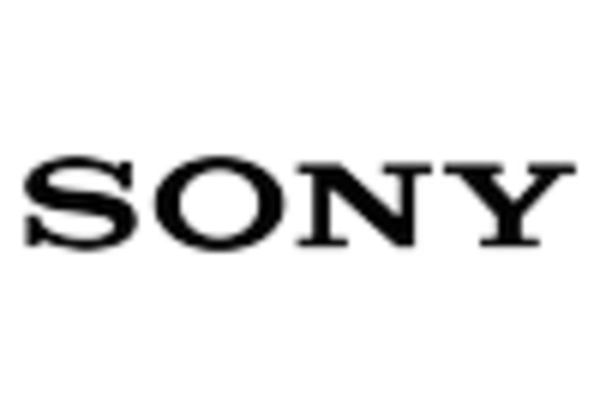









Leave a Comment